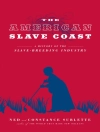In the harsh winter of 1779, as the leader of a flotilla of settlers, John Donelson loaded his family and thirty slaves into a forty-foot flatboat at the present site of Kingsport, Tennessee. Their journey into the wilderness led to the founding of a settlement now known as Nashville—over one thousand river miles away. In the fall of 2016, photographer John Guider retraced the Donelson party’s journey in his hand-built 14½’ motorless rowing sailboat while making a visual documentation of the river as it currently exists 240 years later.
This photo book contains more than 120 striking images from the course of the journey, allowing the reader to see how much has changed and how much has remained untouched in the two and a half centuries since Donelson first took to the water. Equally significant, the essays include long-ignored contemporary histories of both the Cherokee whom Donelson encountered and the slaves he brought with him, some of whom did not survive the journey.
Guider, a professional photographer, has created images of every point in the thousand-mile trip from a platform just a few feet above the waterline of three of Tennessee’s most notable rivers.
Mục lục
Foreword
Jeff Sellers, director of education and engagement at the Tennessee State Museum
Introduction
John Guider
Black Faces along the Cumberland River Basin
Learotha Williams Jr., professor of African American, Civil War and Reconstruction, and public history at Tennessee State University and coordinator of the North Nashville Heritage Project
A Cherokee Perspective on the Founding of Nashville and the Late Eighteenth Century
Albert Bender, Cherokee activist, historian, political columnist, and reporter
Modern Times for the Tennessee and Cumberland Rivers
Carroll Van West, director of the Center for Historic Preservation at Middle Tennessee State University
Giới thiệu về tác giả
Carroll Van West is director of the Center for Historic Preservation at Middle Tennessee State University.












